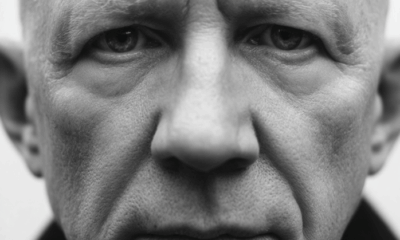Startups
How Leaders Use Body Language to Influence, Inspire, and Command Attention
Understanding and utilizing positive body language can significantly improve your chances of success

Body language plays a crucial role in communication, accounting for 55% of how we convey messages. The remaining components include oral language (7%) and voice modulation (38%). While our conscious mind expresses itself through words, our unconscious thoughts and emotions are revealed through body language.
Understanding and utilizing positive body language can significantly improve your chances of success in various areas of life:
- As a student, presenting positive body language can leave a strong impression on your educators.
- As a job candidate, a confident posture and good eye contact can impress recruiters and increase your chances of landing a job.
- As a professional, demonstrating positive body language fosters a pleasant workplace atmosphere, contributing to career growth.
The advantages of mastering body language are undeniable, making it an essential skill for personal and professional success.
Body Language: Gender and Cultural Differences
Research suggests that women tend to be more adept at reading nonverbal cues, allowing them to better gauge emotions, egos, and hidden aspects of communication.
Additionally, body language is culture-specific. What is considered positive in one culture may be inappropriate in another. For example, some of Michael Jackson’s dance postures were celebrated in some cultures while considered offensive in others. This highlights the importance of adapting body language to cultural norms to ensure effective and respectful communication.
The Role of Body Language in Leadership
Great leaders understand the significance of body language. They use it to project confidence, especially during crises, ensuring their followers remain calm and motivated.
For example, former U.S. President Barack Obama was known for maintaining a composed demeanor. Before Operation Geronimo, the mission to eliminate Osama bin Laden, Obama kept a poker face for 72 hours, carrying out his routine as if nothing significant was about to happen. This level of control in body language prevented panic and maintained stability among his team.
Similarly, financial and political leaders often maintain neutral expressions before making major announcements to prevent market fluctuations or public distress. Experts in body language closely observe leaders and provide insights to industries such as stock trading, where nonverbal cues can indicate upcoming financial shifts.
Body Language in Public Speaking
Public speaking is a blend of three key elements: perspiration (effort), preparation, and inspiration. To deliver an impactful speech, speakers must thoroughly research their topic, craft compelling content, and inject the right emotions into their delivery.
Many of history’s most memorable speeches, such as those by Swami Vivekananda at the Chicago Conference, Winston Churchill during World War II, Martin Luther King Jr.’s “I Have a Dream” speech, and Jawaharlal Nehru’s independence address, were powerful because they evoked emotions.
Keys to Effective Public Speaking:
- Understand Your Audience
- Analyze their demographics, cultural background, and expectations.
- Tailor your speech to resonate with them.
- Strong Opening Techniques
- Speak slowly at the beginning to build rapport.
- Introduce yourself, welcome the audience, and provide a brief overview of the topic.
- Consider memorizing the introduction for a confident start.
- Use humor or thought-provoking questions to engage listeners.
- Utilize technology (such as slides or videos) to create an immediate impact.
- Deliver with Emotion and Variation
- Vary your voice tone to maintain interest.
- Balance body animation, vocal inflection, and facial expressions.
- Use strategic pauses to allow the audience to absorb key points.
- Closing with Impact
- Signal the conclusion using phrases like “finally,” “in conclusion,” or “to summarize.”
- End with a strong takeaway message.
- Express gratitude to the audience for their time and attention.
Debunking Myths: Body Language is Not Just Hype
Some critics argue that body language is overrated. However, its importance is widely recognized in fields such as law enforcement and intelligence. Investigators often rely on body language analysis to detect deception, as people’s nonverbal cues can contradict their words.
The saying “the face is the index of the mind” holds true in body language studies. Ancient sages emphasized the importance of nonverbal communication long before modern psychology validated its impact. In today’s competitive world, mastering body language provides a distinct advantage, helping individuals make lasting impressions and achieve professional success.
Conclusion
Body language is a powerful communication tool that influences relationships, leadership, and public speaking effectiveness. By understanding and refining your nonverbal cues, you can enhance your personal and professional interactions, leaving a positive and lasting impact on those around you.
Shift Your Mindset
10 Powerful Traits Every True Thought Leader Possesses
In a world saturated with noise, thought leadership is the quiet power that shifts paradigms.

Thought leadership is more than just having strong opinions. It’s the ability to influence, inspire, and guide others by sharing original insights, innovative ideas, and deep domain expertise. It’s about sparking change, not just talking about it. (more…)
Startups
The Young Man’s Guide to Creativity: 10 Daily Habits to Improve Your Creative Mind
10 daily habits you can put into practice right now to improve your creativity

When I was 22 years old, I became a Top Writer on Medium.
It’s not an easy path. I lived in the Philippines and had never received a penny after writing over 100 digital articles. But I treated it like practice. If I couldn’t get other people to read my work for free, why would they trust me? (more…)
Startups
If You’re Not Reinventing Yourself, You’re Falling Behind! Here’s What To Do
Reinvention is the secret weapon of high performers.

Reinvention is the secret weapon of high performers.
Most careers follow a predictable script. You start at the bottom, climb the ranks, and eventually settle into something resembling stability. But the people who make the biggest impact, the ones who don’t just play the game but change it, break that script. They evolve. They shift. They reinvent. (more…)
Startups
The Silent Killer of Startups: This Might Be Draining Your Profits
If you are careless in managing your inventory, it can lead to a sudden depletion in cash flow

There are several issues in a startup, but if you are really careless in managing your inventory, it can lead to a sudden depletion in cash flow. Old, broken, and misplaced stock wastes space and profits. If inventories and storage aren’t managed properly, it hardly ever works.
-

 Personal Development4 weeks ago
Personal Development4 weeks agoThis Silent Habit Might Be Sabotaging Your Career
-

 Business4 weeks ago
Business4 weeks agoWhy Your E-Commerce Fulfilment Is Probably Broken (And How to Fix It)
-

 Shift Your Mindset3 weeks ago
Shift Your Mindset3 weeks ago11 E’s That Define Every Great Leader And Why Most People Miss Them
-

 Did You Know3 weeks ago
Did You Know3 weeks agoThe Success Patterns You Inherited (And Didn’t Notice)
-

 Business3 weeks ago
Business3 weeks agoThe Hidden Money Pit in Your Operations (and How to Use It)
-

 Entrepreneurs2 weeks ago
Entrepreneurs2 weeks agoThe Essential Skills Every Entrepreneur Needs In 2026
-

 Change Your Mindset2 weeks ago
Change Your Mindset2 weeks agoHow to Turn Your Mind Into Your Greatest Asset (Instead of Your Enemy)
-

 Change Your Mindset1 week ago
Change Your Mindset1 week agoThe Silent Skill That Makes People Respect You Instantly


























